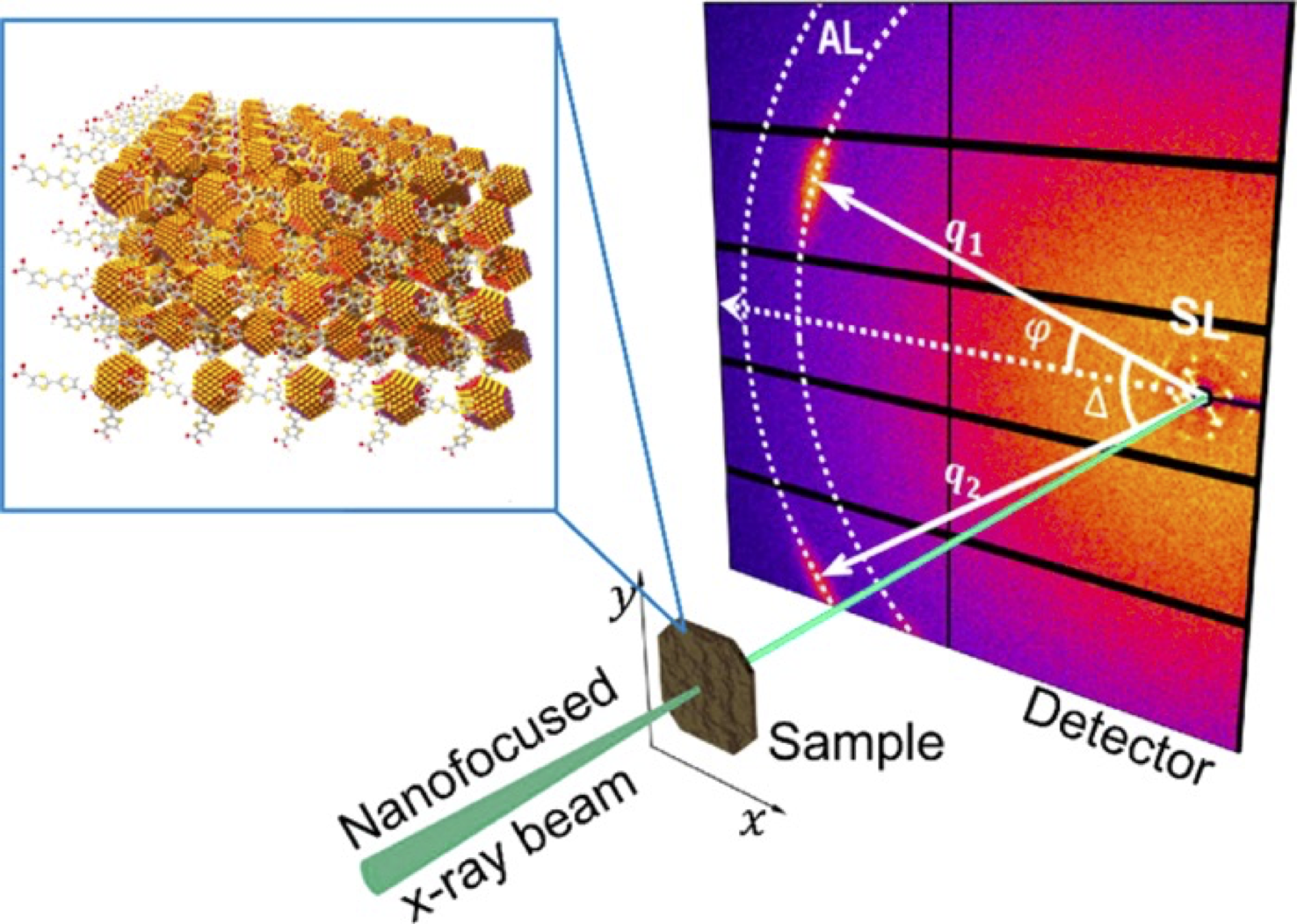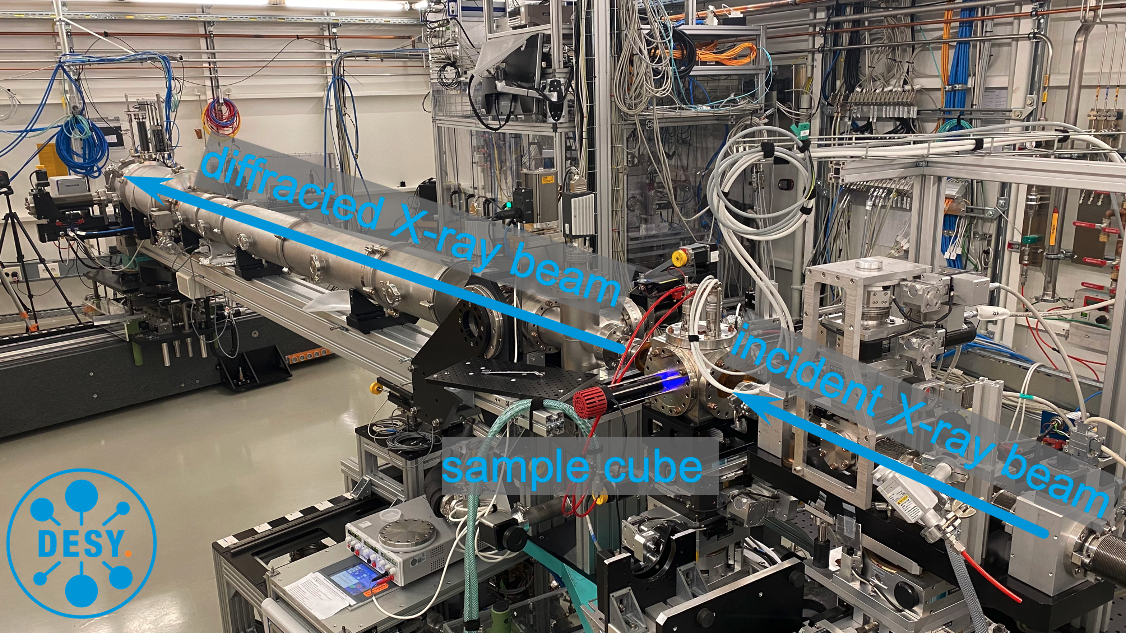 X-rays is a form of electromagnetic radiation with a very short wavelength, so they can be scattered by individual atoms. This allows one to study the structure of materials on atomic scale by analyzing X-ray scattering patterns.
X-ray scattering has been extensively used to study crystal lattices since the beginning of the 20th century, and the vast majority of crystal structures were characterized by X-ray diffraction. Nowadays, with the development of bright synchrotron sources, we can utilize ultra-bright X-ray beams with a nanosize focus spot and tunable energy. It makes X-rays a very important tool to characterize the crystal structure of novel materials and devices on the nanoscale.
X-rays is a form of electromagnetic radiation with a very short wavelength, so they can be scattered by individual atoms. This allows one to study the structure of materials on atomic scale by analyzing X-ray scattering patterns.
X-ray scattering has been extensively used to study crystal lattices since the beginning of the 20th century, and the vast majority of crystal structures were characterized by X-ray diffraction. Nowadays, with the development of bright synchrotron sources, we can utilize ultra-bright X-ray beams with a nanosize focus spot and tunable energy. It makes X-rays a very important tool to characterize the crystal structure of novel materials and devices on the nanoscale.
Figure 1: (right) Nanofocused X-ray beam is used to determine the structure of a 3D array of PbS nanopartiles (I. Zaluzhnyy et al., Nano Lett (2017))
 X-rays can be produced using so-called X-ray tubes. We have several X-ray units in our laboratory and we use them on a daily basis to characterize the structure of various samples. We also travel to synchrotron sources (such as
X-rays can be produced using so-called X-ray tubes. We have several X-ray units in our laboratory and we use them on a daily basis to characterize the structure of various samples. We also travel to synchrotron sources (such as  We are free in our choice of samples to study: X-rays can be used to investigate almost any type of materials. Currently, we have the following projects:
We are free in our choice of samples to study: X-rays can be used to investigate almost any type of materials. Currently, we have the following projects: